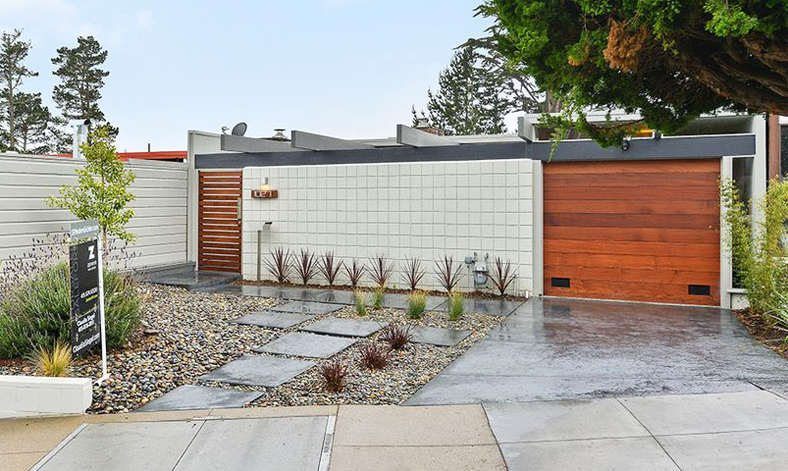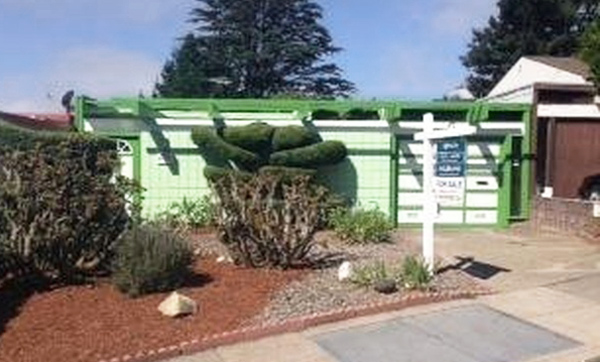Diamonds in the Rough - Page 2
 |
|
|
 |
|
|
"You get more view than with a regular Eichler," says Klopf, explaining that the original mahogany paneling and the views provided through walls of glass were two things his Amber owners wanted to retain in their remodel.
"They had respect for the Eichler house in general, a sort of appreciation of the style. That's the reason they bought the house," he says. "They didn't want to depart completely from the Eichler style."
To that end, the owners had no problem with shedding wood shingles added by a previous owner to the front façade. But that move presented a challenge to choose a replacement siding.
"It's a tough decision to side these because of the tall walls," Klopf notes, and it's something not present in most Eichler remodels. "You can't just reach into the Eichler toolkit for a usual solution."
The team, which included general contractor San Francisco Design and Construction, settled on vertical siding made of Kayu Batu, an Indonesian hardwood with a reddish-mahogany tone. The new siding helps bring the outdoors inside by continuing from the exterior into the dining area—and even into a new master closet. Adding white cabinetry and walls, along with gray floor tile that harkens back to the concrete floors of most Eichlers, renders a warm, compatible palette of mahogany, white, and gray.
Klopf faces similar but different challenges in his current Diamond Heights project, a non-Eichler modern home on nearby Turquoise Way that has a downhill orientation as opposed to the uphill one encountered on Amber.
"It's because of the hillside," he says of the contrast with most housing tracts. "It's more of an effort to get out to the yard. You can't just walk out some sliding-glass doors."
Klopf, who doesn't mind the challenges of working with Diamond Heights' topography, notes a sprinkling of recent 'for sale' signs in the changing neighborhood. "Usually when we see mid-century properties turn over," he says, "there's a lot more interest in renovating."
And when tempered with smart design decisions, that could be a great thing for a neighborhood on the way up—perhaps like Diamond Heights.




